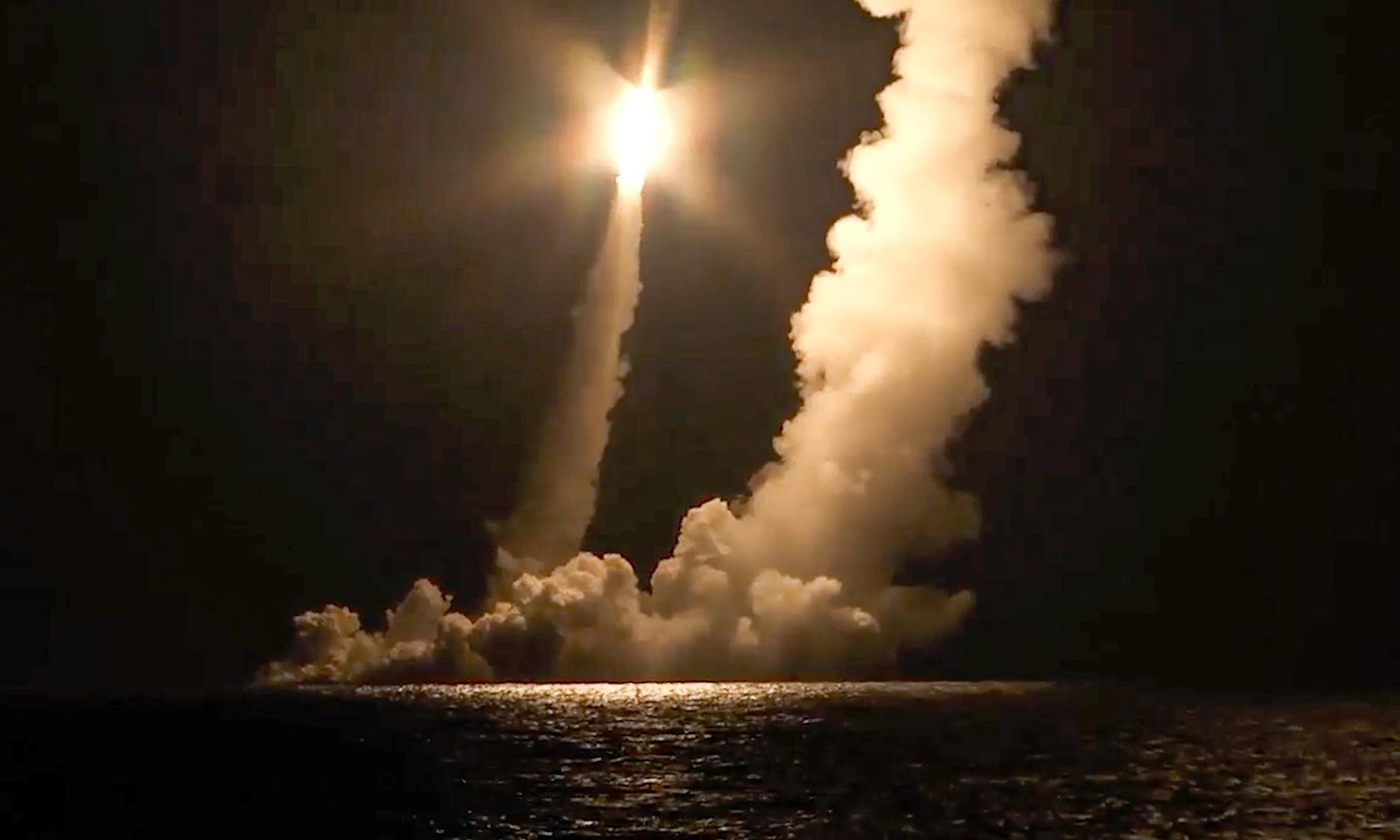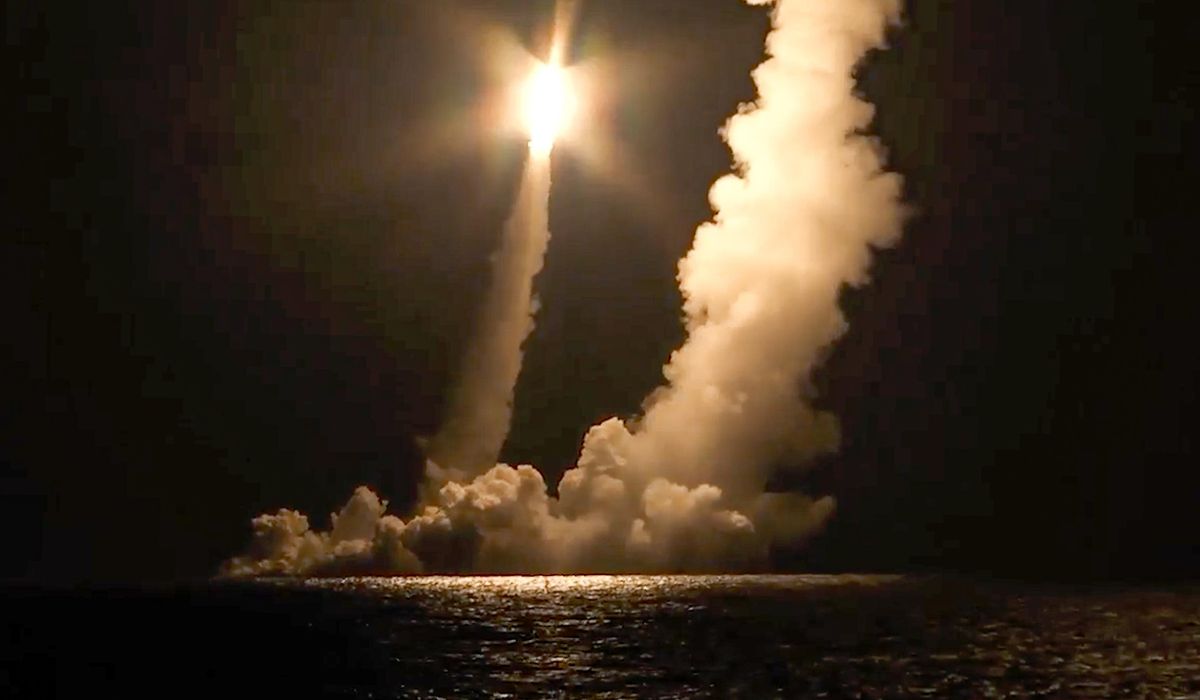

Russia’s nuclear saber-rattling amid the war in Ukraine has raised concern in Washington as lawmakers grapple with President Biden’s cancellation of the Navy’s sea-launched nuclear cruise missile.
The Navy nixed funding for the nuclear-armed sea-launched cruise missile (SLCM-N) in its budget request for the 2023 fiscal year as a result of the Pentagon’s five-year Nuclear Posture Review, creating what the head of U.S. Strategic Command Adm. Charles Richard called “a deterrence and assurance gap.”
The missile was designed to give the U.S. options in responding to a low-yield nuclear launch from an adversary before resorting to an all-out strategic nuclear missile exchange. But critics argued that the wider deployment of tactical nuclear weapons could increase the risk of inadvertently triggering a nuclear war.
The weapons system has been in development but is not operational.
While Mr. Biden has appeased critics of the SLCM-N by canceling the system — which was created under the Trump administration — lawmakers are beginning to question whether the U.S. is giving up a key deterrence as Russian President Vladimir Putin spouts off once-unthinkable threats of nuclear war.
“Putin is rattling tactical nuclear weapons,” said Sen. Angus S. King Jr., Maine independent and chairman of the Senate Armed Services subcommittee on Strategic Forces. “You don’t want a situation where they believe they can use a tactical nuclear weapon and our only response is a massive response, which they don’t believe we will do. That undermines the whole concept of deterrence.”
Since the Russian invasion of Ukraine in late February, Mr. Putin has on multiple occasions sparked fears that he would resort to tapping into his nuclear arsenal to send a message to the west.
While CIA Director William Burns has downplayed many of these threats, saying the intelligence community has yet to see “practical evidence” that Russia is currently postured for a nuclear standoff, he nonetheless said the threats should not be taken lightly.
At issue for lawmakers is whether the U.S. can deter Mr. Putin by presenting a measured response.
“The question is do we need to have a capability that they know we have to match their shorter range, tactical capability so that they know that we aren’t faced with an all-or-nothing response,” Mr. King said. “That’s the strategic question that I’m concerned about. I don’t know the answer but I want to get the answer.”
Russia has an estimated 2,000 tactical nuclear weapons deployable from the air, land, and sea, far outnumbering the U.S.’s estimated 100 air-launched B61 thermonuclear gravity bombs deployed in Europe.
“They think that they are getting an advantage over us,” said Patty-Jane Geller, a senior policy analyst for nuclear deterrence and missile defense at The Heritage Foundation. “It’s not to say that we can’t deter the use of nuclear weapons at lower levels of the escalation ladder, but our capabilities are very, very limited.”
Ms. Geller said Russia’s buildup of its tactical nuclear capability indicates that Moscow is seeking to further exploit its advantage. Amid the high-stakes nuclear gamesmanship, she said, the U.S. has little option but to counter Russia with credible deterrence.
“We need to think about what the adversary perceives because that’s what deterrence is all about,” Ms. Geller said. “It’s not what we think will deter an adversary. It’s what the adversary thinks will deter them.”
“If we had a stronger non-strategic capability like the [SLCM-N] lurking the seas, our deterrence would be more credible,” she said.
She said the U.S. is at an even greater disadvantage as it looks to counter China, which the administration and lawmakers from both parties agree is Washington’s “pacing threat.”
“China has hundreds of dual-capable regional missiles capable of striking U.S. assets and allies in the region,” Ms. Geller said. “The United States has zero nuclear capabilities forward deployed to the Indo Pacific.”
Republican lawmakers have pressed Pentagon brass on the SLCM-N in recent weeks, pitting generals against the administration over the cancellation.
In testimony before the House Armed Services Committee earlier this month, Chairman of the Joint Chiefs of Staff Gen. Mark Milley publicly broke with Mr. Biden over the cancellation.
“My general view is that this president or any president deserves to have multiple options to deal with national security situations,” Gen. Milley said when pressed by Republican Reps. Mike Turner of Ohio and Doug Lamborn of Colorado. “And my advice is listened to. And I have an opportunity to express my voice on a continuous basis many, many times.”
Earlier this week, Sen. Deb Fischer of Nebraska, top Republican on the Senate Armed Services subcommittee on Strategic Forces, pressed Air Force Global Strike Command chief Gen. Anthony J. Cotton on U.S. tactical nuclear capability. While Gen. Cotton declined to weigh in on the SLCM-N cancelation, he agreed with Mrs. Fischer that the U.S. needs to have a credible deterrent capability to counter Russia’s and other adversaries’ tactical nuclear weapons.
“The situation in Ukraine, and just listening to the way Russia is addressing that with blustering about their nuclear weapons, highlights the fact that SLCM-N is an option for a president of the United States,” Mrs. Fischer told The Washington Times on Thursday.
The concern is not limited to the Republican Party. Democratic lawmakers are also beginning to raise concerns about the U.S.’s nuclear deterrence gap exposed by the war in Ukraine, and Mrs. Fischer expects more Democrats to second-guess the decision to cancel the SLCM-N.
Sen. Richard Blumenthal, Connecticut Democrat, would not comment on the SLCM-N cancellation specifically, but said the war in Ukraine has exposed the need “to avoid any possible gap to deter any kind of nuclear escalation.
“The Russians understand only one thing and that is potential force,” he said. “Putin is a thug and a murderer. He needs to be convinced that we can respond in kind in order to avoid his nuclear arms of any kind.”
